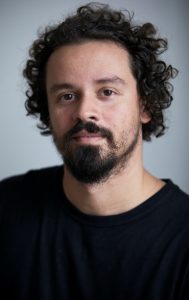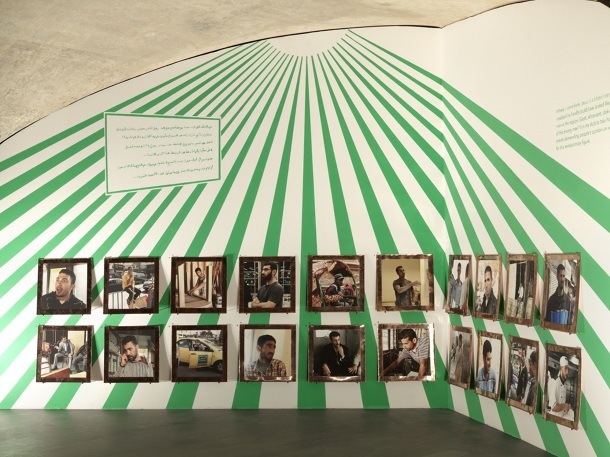São Paulo – In Amman, the capital of Jordan, artist Jonathas de Andrade searched for Jesus in the faces of common men. Born in Maceió, Alagoas and based in Recife, Pernambuco, Andrade was invited to take part in an art residency in the city in 2013 at Jordanian foundation Darat al Funun. While walking around the Jordan Riven, he decided to work on the Eurocentric vision that the Biblical image earned in the imagery in countries like Brazil.
For that, he strolled around the streets of the Arab countries and took pictures of 20 different men. Then, the Brazilian asked different Jordanians about which of those options was the most similar to the Biblical figure that is also a prophet in the Islam.
The result is the installation Procurando Jesus (Looking for Jesus). Besides the copper-framed photos, the artist exhibits 16 acrylic plates with answers he got on the streets. All writings are in English, Portuguese and Arabic, calligraphed by a Jordanian translator. In the end, visitors are offered a date fruit and can vote on the face that resembles Jesus Christ the most.
The work was presented in the same year at the foundation in Amman. “In the Muslim culture, it’s uncomfortable to think about the image of a prophet. It’s a provocation. But it also covers the idea of beauty, what is expected from Jesus as a figure,” he told ANBA.

The artist has a degree in Social Communication and says that the mixed media – such as photography and interaction with the public – helped him create a narrative. “With the work, I put forward a vote to decide for a new image of Jesus. There’s a whole question on the Western identity, which is very Eurocentric because of the Italian iconography,” he explained.
While strolling around the capital of Jordan, the artist showed a text to the interviewees. “I realized that… How did that young man look like? How was his hair like? Was there a twinkle in his eyes? I composed a text while walking by the Jordan River incorporating a character as this was my mission. [In the text] I say that it was my duty to create a new image of Jesus,” said he, who also brought this writing to the exhibit.
From Amman to Brazil
The exhibition has already been in Florence, Italy at Marino Marini Museum (pictured above) in 2014. Now, six years after its conception, the artwork is exhibited in Brazil for the first time. It’s at the Sesc_Videobrasil Contemporary Art Biennial in São Paulo, which will run until next year. “2019 is another political context. It’s very interesting to reassemble this work. A Syrian calligrapher wrote the text on the wall. He arrived in Brazil just four months ago; we’ve met through [non-profit organization] Abraço Cultural,” he explains about the Brazilian installation, which features the work by Syrian calligrapher Samir Awad.

The artist had already been in Egypt before Jordan. Now 37, Andrade believes that living in Brazil Northeast connected him to those places. “I had already been in Cairo for another residency in 2011. I spent 40 days there and my first contact with that culture was very intense for me. It was my first time in an Arabic-speaking country. I was quite taken aback with the similarity between the [Egyptian] people and people from Brazil Northeast. My own physical features… People used to think I was born there,” said the Brazilian artist, who also visited Lebanon.
His passage through Levant countries gave him new perspectives. “It was very interesting seeing Jordan and having a better understanding of the region, which is really complex and very stigmatized by the world mainstream media. Going there, talking to the people, making friends was very important to understand its nuances. Understanding how these cultures were before the war. The recent wars. It’s similar to Brazil in issues relative to the people, but it’s also very different… People here knows little about the reality (in the Arab countries),” he stressed.
In November, Jonathas de Andrade will start a series of exhibitions in Pernambuco with the project “Caravana Museu do Homem do Nordeste.” Moreover, Darat al Funun foundation invited the artist to go back to Jordan next year. They want to get him to develop a project that will include the video “O peixe,” which is described by him as one of his main works.
Translated by Guilherme Miranda




